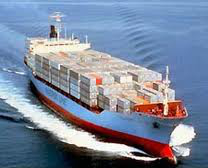- Documents required for adjustment
The documents required for general average claims vary considerably according to the nature of the casualty. The following items are selected as applying to the majority of cases.
Documents/information where there has been a resort to a port of refuge:
a) Log extracts and reports from the master or other relevant parties showing the dates and times when the vessel deviated, arrived at port of refuge, left port of refuge and regained her position.
b) Any survey reports, whether held on behalf of underwriters, owners or the Classification Society, dealing with the vessel’s resort to the port of refuge and/or any repairs effected there, together with accounts covering cost of survey.
c) Details of any repairs effected at the port of refuge, stating whether they are temporary or permanent repairs, and also how much of the repair account represents the costs of overtime worked by repairers.
d) Details of any shifting or discharge of cargo at the port of refuge, stating whether such shifting or discharge was necessary either in order to allow repairs to be effected, or for the common safety. If any costs have been incurred in this respect, the accounts for same.
e) Agent’s general account covering the detention period at port of refuge together with supporting vouchers.
f) Portage bill giving details of wages and allowances paid to crew of vessel at the time of her resort to the port of refuge.
g) The daily rate of maintenance paid in respect of victualling the crew of the vessel.
h) Details of fees and expenses paid to any owners’ superintendent/surveyor employed at the port of refuge.
i) Details of fuel and stores consumed in deviating to the port of refuge, while detained there, and in regaining position.
j) Copies of telexes sent and details of long distance calls made in
connection with the casualty together with their costs.
k) All accounts should be marked with the date on which they were paid by owners.
Documents in respect of ship:
a) If a vessel has been on fire.
i. Survey report showing division of damage between fire and efforts to extinguish the fire.
(The same division should also be made in surveys of any similar damage to cargo.)
iii. Accounts for repairs to the vessel should also be divided in this way.
iv. Accounts for any fire-fighting costs, refilling extinguishers, C02 bottles etc.
b) If vessel has been aground.
i. Survey report dividing the damage found between that caused by grounding and that caused by refloating.
ii. Repair accounts should be similarly divided.
iii. If the vessel has been refloated with tugs, a copy of the salvage contract.
iv. Accounts for any costs incurred lightening the vessel, eg lighterage.
Documents in respect of cargo:
a) Specimen bill of lading showing front and reverse side.
b) Manifest of the cargo on board at the time of the accident.
c) Details of the out-turn of cargo delivered.
d) Any reports of survey on the cargo held directly following the casualty or at the ports of destination.
e) General average security documents furnished by cargo interests, if average bonds and general average guarantees.
f) Counterfoils of any general average deposit receipts issued.
g) Valuation form completed by cargo interests, if possible accompanied by a copy of the invoice covering the particular consignment.
Documents in respect of freight:
a) It will assist the average adjuster if the shipowner will furnish details of the chartering situation of the vessel and, where possible, supply copies of the charter parties.
b) Original copy of the carrier’s hill of lading.
c) Where the freight is payable at destination the adjuster will require copies of the accounts showing amount of freight earned and the cost of earning the freight.
2. Contributory interests and values
As a general principle it may be said that property saved by the general average act contributes on its value at the time and place where the common adventure ends.
Ship
The ship contributes on her value in damaged condition at the termination of the adventure, that is, at the final port of destination on completion of discharge of cargo (unless the voyage is abandoned at an intermediate port). It is usual for the shipowner to obtain a valuation certificate from a ship sale and purchase broker in which the estimated market value of the vessel is stated and, in accordance with Rule XVII of the York-Antwerp Rules 1974, the beneficial or detrimental existence of a charter party is ignored.
From the sound value is deducted the cost of all repairs effected to the vessel subsequently to the general average act, in order to arrive at the damaged value.
Cargo
Under Rule XVII of the York-Antwerp Rules 1974 cargo contributes to general average on its value at the time of discharge as evidenced in the commercial invoice. If there is no such invoice the value will be ascertained from the shipped value.
The invoice supplied for the purpose of adjustment should be the CIF invoice (cost, insurance and freight), unless the freight is payable at destination on delivery of the cargo. The adjuster should also be supplied with details of any damage which the cargo has sustained and which may form a deduction from the sound value.
Also, where cargo is either a total loss by general average sacrifice or is sold short of destination with damage caused by general average sacrifice, particulars of the value of that cargo, as if it had been delivered to original destination will still be required.
Freight
Whether the freight earned on the voyage contributes to the general average will depend on the terms of the contract of affreightment.
Where the bill of lading or the voyage charter party states that freight is prepaid and not returnable (ship and/or cargo lost or not lost), the value of the freight will be included in the value of the cargo (CIF) and will not contribute as a separate interest.
Where, however, the freight is payable at destination only on right and true delivery of the cargo, it is at the risk of the carrier and will contribute on its net value, if the gross freight earned, less the cost of earning it, such as port charges at destinations, cost of discharging the cargo, crew’s wages and fuel consumed in completing the voyage.
Where a vessel is trading under a time charter and the freight payable under the bill of lading is prepaid, the shipowner escapes contributions on his time hire, but where the bill of lading freight is payable at destination a division is made between the interests of the shipowner and the charterer according to the respective amounts each has at risk.
Time charterer’s hunkers
When, under the terms of a time charter, the charterer provides the fuel, he will be called upon to contribute on its net value at destination.
Containers
Containers saved by a general average act will usually be called upon to contribute on their net value at destination. If this valuation presents
problems then the insured value or written down value will be taken for contributory purposes.
3. Settlement under adjustment
After examining all the documentary evidence and having obtained satisfactory answers to his questions, the adjuster will produce a document in book form setting out the circumstances of the casualty, the contractual conditions governing the adjustment, the amounts allowable in general average for sacrifices of property and disbursements incurred, the values of the contributing interests, the apportionment of the total general average and the final amount of the debit or credit of the parties concerned.
Copies of the adjustment, or extracts from it, will be sent to all cargo interests and if they are debtors they will be asked to send the appropriate amount to the adjusters in settlement of their contribution. If they are creditors they will be informed that payment will be made in due course when all the amounts due to be paid have been collected.
In cases where there is to be a refund of part of a deposit, paid as security for the general average contribution, this refund will only be made when the document of title, the original deposit receipt, is produced to the adjuster.
4. General average on vessels in ballast
General average can arise whenever property of different owners is involved in one, common, marine adventure. In the case of a vessel with no cargo on board, the vessel herself, the bunkers on board, hired radio equipment and sometimes other items of stores and equipment may often, in practice, be in different ownership.
Furthermore, even though such items all belong to the same owner, the various interests may be separately insured under contracts of insurance containing provision for adjustment of general average.
The content of this book concerns primarily cases of vessels carrying cargo and is irrelevant to cases of general average on vessels in ballast. In particular, settlements between shipowners, charterers and owners of radio equipment etc and between the underwriters concerned involve no need for general average security.
5. Claims on policies of insurance
While general average itself is not part of the law of marine insurance, but part of the law of carriage by sea, nevertheless the risk of being called upon to contribute to general average sacrifice or expenditure made or incurred to avoid a loss by perils insured against is usually covered by policies on hull and machinery, cargo and freight.
Takis Kalogerakos
Marine Underwriter




